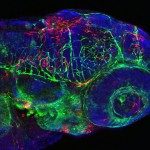Link to Pubmed [PMID] – 9120291
J. Immunol. 1997 Apr;158(7):3335-43
Regression of P815 tumors established on naive syngeneic mice can be obtained by the intratumoral injection of a single dose of an adenoviral vector expressing the IL-2 gene (Ad.IL2). Injection triggers local IL-2 production for at least 10 days. We measured a number of immunologic parameters in situ following intratumoral Ad.IL2 treatment. We also analyzed the situation of regression obtained upon challenge with P815 cells of mice previously immunized against the tumor and compared both systems. While IFN-gamma messenger RNA expression was found to be elevated in both situations of tumor regression, the level of infiltration by tumor-specific CTL was different. A small amount of tumor-specific CD8+ T cells were present in growing, untreated tumors. Such cells are found in much larger numbers in tumors rejected upon challenge, consistent with a CTL-mediated rejection. In contrast, they were found not to proliferate following Ad.IL2 injection. The latter caused an increased infiltration of a polyclonal, presumably nonspecific, T cell population. These results suggest that the initial regression of established P815 tumors following Ad.IL2 treatment in vivo is mostly due to nonspecific effectors.

